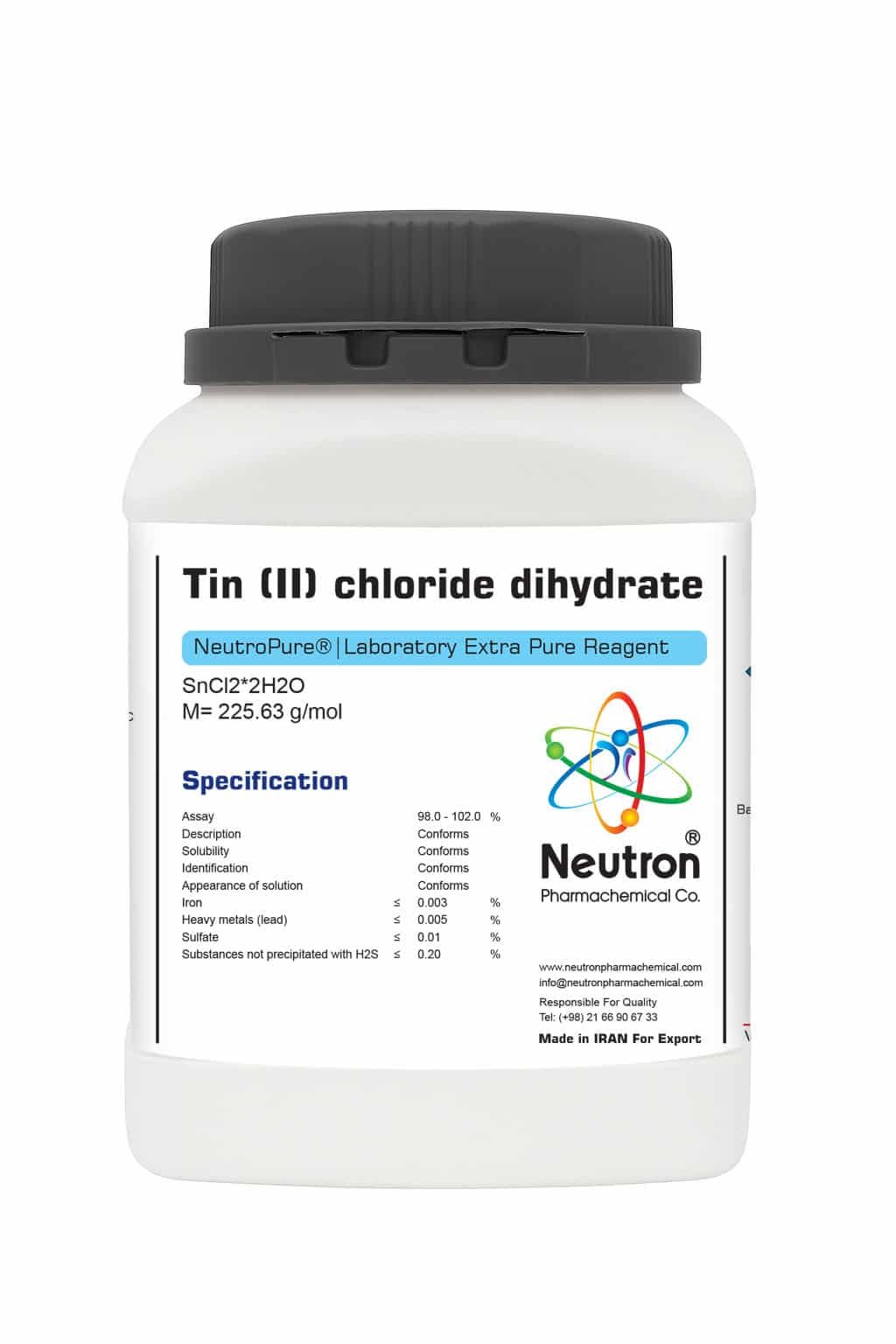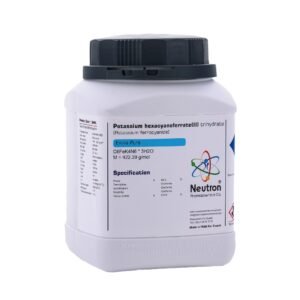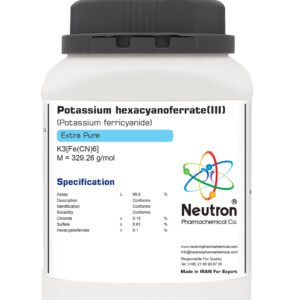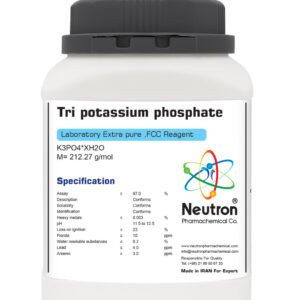قلع II کلراید دی هیدرات
| Chemical formula | SnCl2*2H2O |
| Molar mass | 225.63 g/mol |
| Bulk density | ~1250 kg/m3 |
| CAS number | 10025 -69-1 |
| HS | 28273910 |
| EC | 231-868-0 |
| Storage | Store at +5 to + 30°C |
| SDS | available |
| RTECS | XP8850000 |
| R phrase | R 22-36/37/38-43 |
| S phrase | S 24-26-37 |
| Odour | odourless |
| Form | solid |
| Color | white |
| p H value | ~ 1-2 (100 g/l 20 °C ) |
| Solubility in water | 1187 g/l ( 20 °C ) |
| Assay | 98.0 – 102.0 | % | |
| Description | Conforms | ||
| Solubility | Conforms | ||
| Identification | Conforms | ||
| Appearance of solution | Conforms | ||
| Iron | 0.003 | % | |
| Heavy metals (lead) | ≤ | 0.005 | % |
| Sulfate | ≤ | 0.01 | % |
| Substances not precipitated with H2S | ≤ | 0.2 | % |
Tin(II) chloride dihydrate is a white crystalline inorganic compound commonly used in pharmaceutical laboratories and chemical synthesis, particularly known for its role as a reducing agent and a source of Sn²⁺ ions in analytical and preparative chemistry.
🏭⚗️ Production
Tin(II) chloride dihydrate is typically prepared by dissolving metallic tin in concentrated hydrochloric acid, followed by crystallization. The resulting solution forms SnCl₂·2H₂O crystals upon cooling and evaporation.
🔬 Properties
The chemical formula is SnCl₂·2H₂O, with a molar mass of approximately 225.63 g/mol. It appears as colorless to white crystalline solid, highly soluble in water, and forms acidic solutions. It has a melting point of around 37 °C and decomposes upon heating. In aqueous solutions, it readily hydrolyzes, especially in the presence of oxygen, forming basic salts or tin oxides. As a dihydrate, it is less stable than the anhydrous form and must be stored properly to prevent oxidation.
🧪 Applications
Tin(II) chloride dihydrate is widely used in laboratories as a mild reducing agent, especially in the reduction of ferric to ferrous ions and in organic chemistry for the reduction of nitro groups to amines. It is used in pharmaceutical analysis, including the detection of gold and mercury ions. In the pharmaceutical industry, it is also applied in radiopharmaceutical preparations, particularly for reducing technetium-99m in diagnostic imaging. Moreover, it is used in textile dyeing, electroplating, and mirror silvering processes.
⚠️ Safety
Tin(II) chloride dihydrate is corrosive and can cause skin and eye irritation, as well as respiratory tract irritation upon inhalation of dust or vapors. Prolonged exposure may lead to more serious health effects. It is also sensitive to air and moisture, and decomposes over time. Personal protective equipment such as gloves, goggles, and lab coats should be used during handling. The compound should be stored in airtight containers, away from oxidizing agents and humidity.





